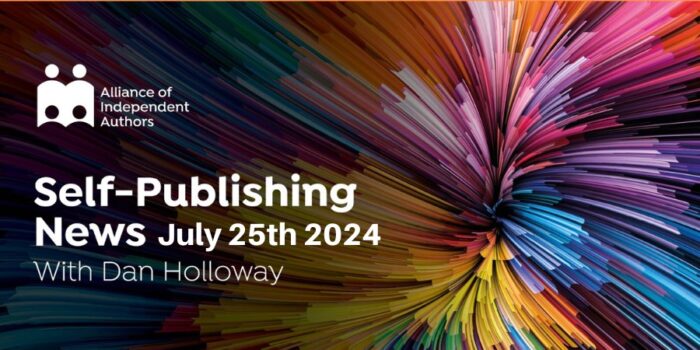
Infographic by: Web Site Creation.com
Self-Publishing By Numbers: Infographic
Share
Leave a Reply
Latest advice, news, ratings, tools and trends.
AI Licensing Platform ‘Created by Humans’ Launches, Plus Amazon Literary Partnership Expands to Ireland: The Self-Publishing News Podcast with Dan Holloway
On this episode of the Self-Publishing News Podcast, Dan Holloway covers the launch of Created by Humans, an AI rights licensing platform, and the Copyright Clearance Centre's new initiative to include AI permissions in their annual copyright licenses. Dan also discusses the expansion of the Amazon Literary Partnership into Ireland, highlighting its support for a range of literary organizations and the opportunities for authors to apply for the 2025 grants.
Self-Publishing News: Universal Basic Income for Creatives and Amazon Literary Partnerships Expand to Ireland
Universal Basic Income is at the center of one of the two stories I want to highlight this week, both of which revolve around supporting creative work. While this story isn’t directly about AI, it uses an AI angle in its original reporting because that is zeitgeisty. AI is currently seen as an existential threat by many, taking over jobs they rely on for their survival.
Reader Magnets and Growing Your Email List for Indie Author Success: The Reaching More Readers Podcast with Dale L. Roberts and Holly Greenland
This month in the Reaching More Readers podcast, Dale L. Roberts and Holly Greenland wrap up their journey around the tips and tricks for email marketing for indie authors. This time, they'll take a closer look at offering “reader magnets,” the importance of testing your mailer systems, and further tips on growing your list. Look back at previous Reaching More Readers episodes for information about why an email list is so important for indie authors and to find out how you can establish your newsletter process.




[…] it by next week. Until then, here’s a swell infographic I stumbled on published by the Alliance of Independent Authors (not sure why, but their acronym is ALLi). Check it (and them) […]
Very informative. I’m seeking to e-publish my first self-help book and climbing the learning curve. There have been a few surprises enroute. However, this information just made it somewhat easier. Thanks.
This one real nice Infographic deserves a special place on Pinterest. I pin it to my board right now.
[…] do want to publish a pbook, then, it generally makes sense to go with POD as the first option. Â See this infographic for a good comparison of offset printing vs print on […]
This is incredibly useful. All the writers I talk to want to know more about how one stacks up against the other. Of course there’s more to it, there always is, but there are a load of great starting points here. Lovely to have a cool graphic to point people to, so thanks!
Very informative. The only figures missing are the per hour labour costs for the marketing required for the two alternatives.
(Nobody claims that traditional publishing offers the active marketing it perhaps once did, but without it’s endorsement the self-publisher has to work longer and harder, and to the detriment of any time for the next book…except some brilliant fiction writers who are ‘hailing’ from an established platform.)
I would be interested in those figures.
We’ve just been alerted by Kristen Jensen that the figure for Amazon ebooks is out of date / a bit inaccurate, implying that it’s 70% on all books. Please adjust your screens accordingly.
This is excellent, just what I needed. As my ‘other’ profession is accountancy, I am always analysing my costs, sales income and wondering how it compares to traditional publishing and print on demand etc.
Thank you so much for this informative post.
Glad to be of service Helena!
Interesting article. However, if you’re a first time romance author with Harlequin or other traditional publishers, the advance is more like $1000 to $4000, unless things have drastically changed in the last few years, which I really doubt.
I know Grace, and advances are largely on the way down, everywhere, since…